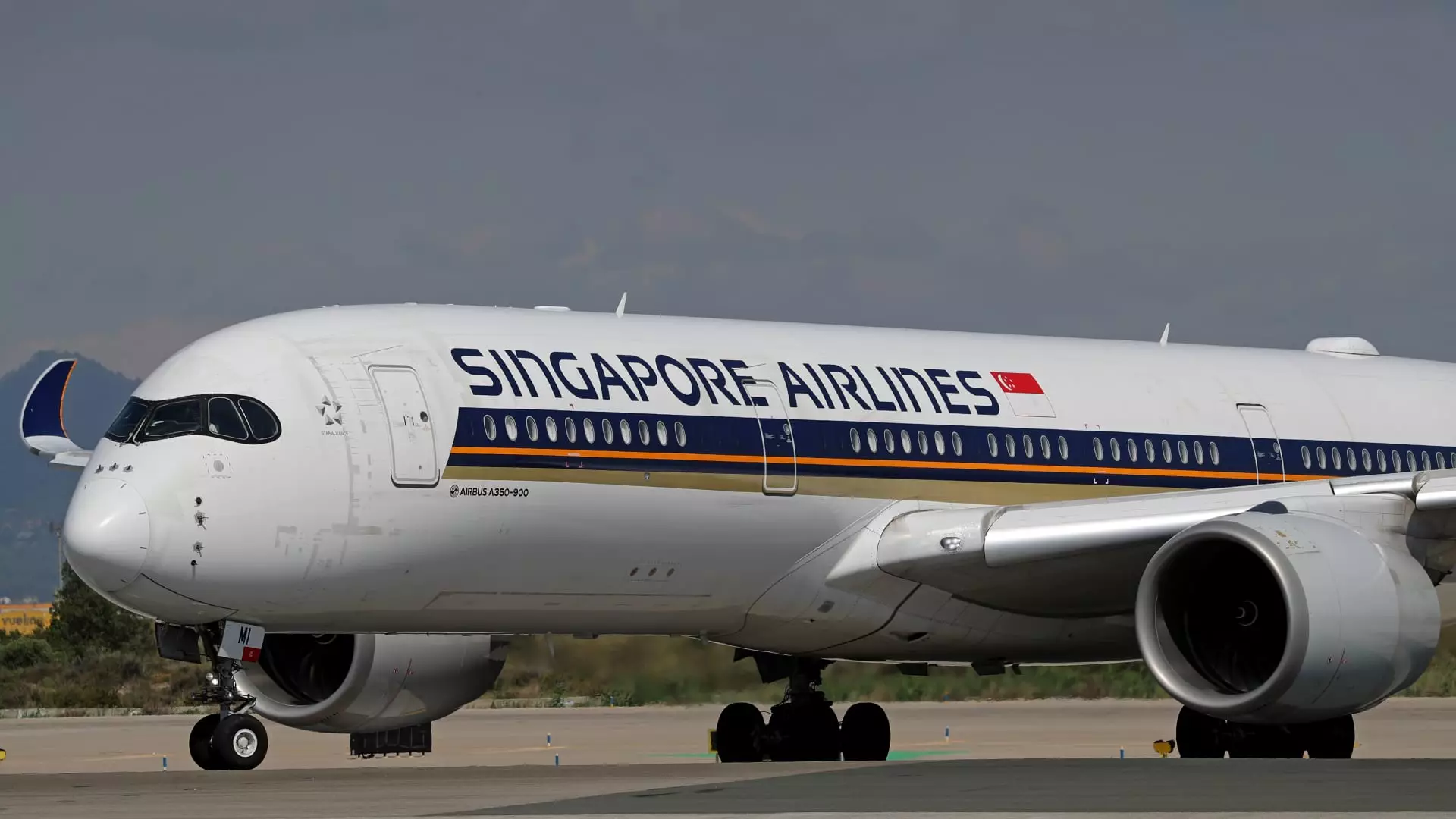Singapore Airlines, one of the leading carriers in Asia, has recently faced a significant setback, reporting a staggering nearly 50% drop in net profit for the first half of its financial year spanning from April to September. This downturn, which has sent ripples through the financial markets, reflects the harsh realities of an increasingly competitive airline landscape. As trading commenced on Monday, shares plummeted by as much as 6.2%, settling at a 3.57% decrease by the end of the day.
The airline’s net profit plummeted to SG$742 million (approximately $559.12 million), a stark contrast to the SG$1.44 billion attained during the same period last year. The operating profit mirrored this decline, falling by 48.8% to SG$796 million from SG$1.55 billion previously. Although revenue did see a positive shift, rising by 3.7% to reach SG$9.5 billion, it was not enough to compensate for the substantial profit declines.
Factors Contributing to Operational Struggles
Curiously, despite an increase in revenue, Singapore Airlines expressed that its profit margins have been severely affected by rising competition across its crucial markets, leading to decreased yields. Chief Commercial Officer Lee Lik Hsin emphasized during an earnings briefing that the airline is caught in a competitive vise as rival airlines restore their capacities to pre-pandemic levels. With passenger traffic increasing by 7.9% year-over-year, the airline’s capacity expanded by 11%, resulting in a disappointing drop in passenger load factor by 2.4 percentage points to 86.4%. This ratio indicates that while more seats are being filled, the rate of growth is insufficient to align with the expanded offerings, ultimately pressuring the bottom line.
Moreover, the airline’s commitment to maintaining an interim dividend of 10 Singapore cents per share demonstrates an effort to reassure investors amid these trying financial times. However, the sustainability of such a dividend in the forthcoming periods is likely in question given the operational pressures.
Future Outlook Amidst Uncertain Conditions
Looking ahead, Singapore Airlines remains steadfast in its approach to enhancing capacity despite the existing competitive pressures. Lee articulated that the airline will not retreat from capacity growth simply because of competition, an assertion that underscores the airline’s ambitious strategy. Nonetheless, the outlook remains cautious as the operating environment is predicted to remain fierce, even though demand for air travel is expected to remain robust.
The announcement of a SG$1.1 billion cabin retrofit program for its fleet of 41 long-range and ultra-long-range Airbus A350 jets highlights Singapore Airlines’ focus on improving customer experience and operational efficiency. Set for completion by 2030, this initiative symbolizes a longer-term strategy aimed at revitalizing the airline’s offerings amidst an evolving market.
While Singapore Airlines has demonstrated resilience through strategic investments, the challenges of profit decline and intense competition cannot be understated. The airline’s ability to navigate this complex landscape will be critical in shaping its financial future.

